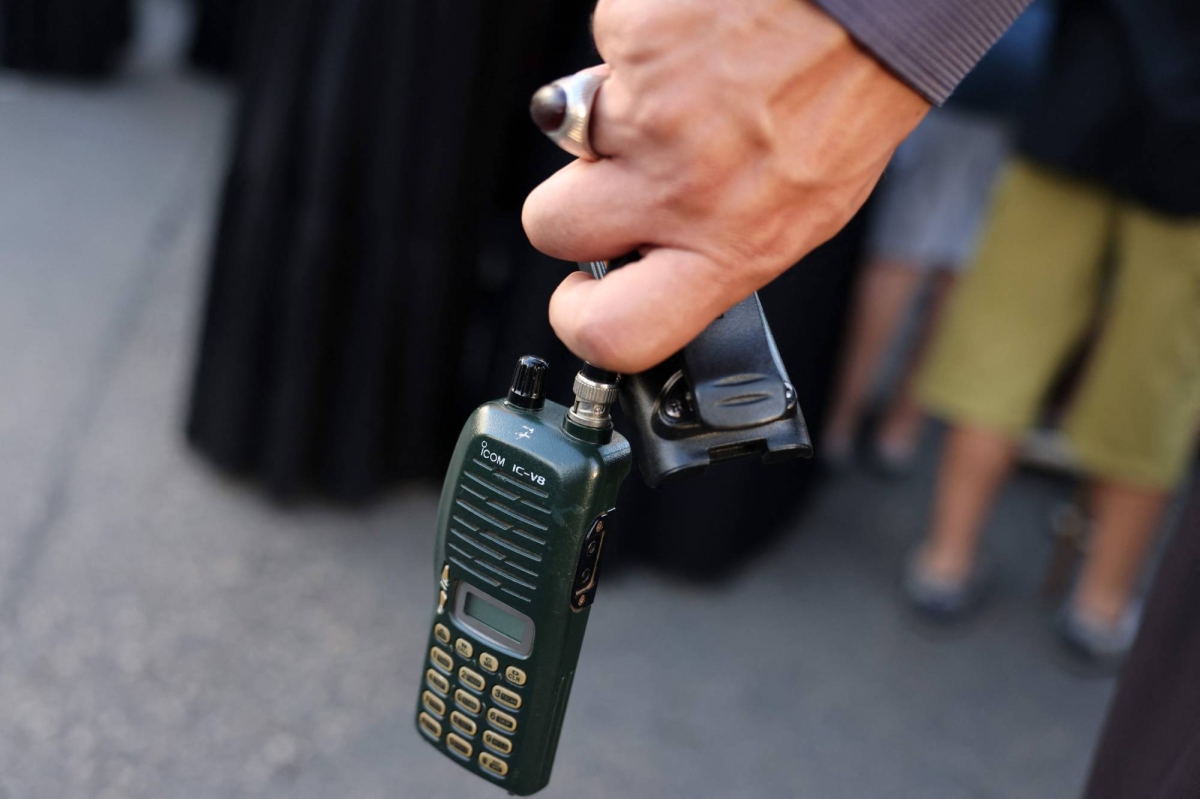The coordinated attack involving the simultaneous explosion of thousands of pagers and walkie-talkie systems operated by Hezbollah in Lebanon has ushered in a new chapter in modern warfare. The waves of attack, which occurred on 17 and 18 September 2024, killed 42 individuals and injured more than 3000. Ever since, more attacks involving ‘bobby trapped’ communication devices have taken place, albeit at a smaller scale. So far, both Israel and its adversaries have employed a series of innovative tactics and novel military technologies against each other with remarkable effects. But the pager’s attack, essentially an amalgam of supply-chain tampering and cyber sabotage, is an extraordinary development and is expected to cause ramifications far beyond the scope of the current conflict.
Pagers, although a relatively dated technology when compared to modern cell phones, are still operated widely by intelligence agencies and emergency services. Pagers and cell phones differ fundamentally in their design, functionality, and purpose. Pagers, also known as beepers, are one-way or two-way communication devices primarily used to send short text messages or numeric alerts and have more battery life. Unlike cell phones, which are more advanced and multifunctional devices, pagers rely on radio frequencies to deliver messages rather than cellular networks. This makes pagers less dependent on interconnected infrastructure like the internet or cellular towers. Their simple design, limited communication range, and independence from major telecommunication networks make them resilient in environments where mobile signals are weak or where digital surveillance is vulnerable to cyber-attacks.
Beside government organizations, criminal networks, and militia groups also often prefer pagers over cell phones for several reasons. First, pagers are generally more difficult to track or intercept than cell phones. Cell phones constantly transmit data, such as location, call logs, and internet activity, to service providers, creating a digital footprint that can be traced through triangulation or GPS tracking. Pagers, on the other hand, only receive signals and can remain passive most of the time, emitting no traceable signal until a message is received. This reduced traceability makes pagers a preferred tool for groups operating under the radar. Second, pagers provide a higher level of security and anonymity because they do not require SIM cards or personal identification, unlike cell phones, which often require registration with a network provider. Additionally, the simple text-based communication of pagers minimizes the chance of sophisticated cyber surveillance or hacking, as there’s no access to apps, internet, or email services that can be exploited for intelligence gathering. For these reasons, pagers offer a low-tech, low-visibility option, ideal for hostile operations where communication security is paramount.
The AR924 model pagers, which were tempered with explosives, carried trademark of a Taiwan’s company called Gold Apollo. The company has distanced itself from the attack citing the pagers in question were manufactured by Budapest based company known as B.A.C under a licensing deal. Such deals are common practice in international markets and both civilian as well as military grade systems are produced using this partnership approach.
Tampering the military supply chain is not a new phenomenon. During 1982 Falkland War, United Kingdom intercepted supply of guided-missiles destined for Argentina and made them inoperable against British naval vessels. Similarly, tempering any electronic device, like cell-phone, with explosive is not a new practice either. Israel has used such weaponized devices in past for target killing. However, the recent incidents involving explosions in pagers and walkie-talkies so eminent is the scale at which attacks have been conducted. It has raised alarms about supply chain security of commercial electronic products also. Publically used items, like communication devices, can be potentially converted into weapons by covert agencies or hostile factions. Such tactics will not only complicate the security apparatus but also blur the distinction between civilian and military applications. In sum, risk of weaponizing commercial items will be making increasingly challenging to anticipate and prevent covert operations that exploit commercial networks.
The potential involvement of Taiwanese and Hungarian companies highlights the complex legal landscape surrounding cross-border supply chains. Multi-National Companies (MNCs) in particular can become vulnerable to international security conflicts. The tempering of MNCs’ products for kinetic effects can undermine the credibility of their names and thus damage MNCs’ business networks. This scenario emphasizes the need for consistent cross-border regulatory frameworks and mutually-agreed international standards that enforce effective monitoring and compliance across the entire supply chain.
The security of supply chain is further complicated by the often-ambiguous boundary between government-directed interventions and unauthorized tampering by malicious actors. For example, governments may lawfully intercept or modify products for security reasons, such as tracking or disabling certain functionalities. Such tempering may appear unethical, but still may fall within legal domain and thus can be kept in check. However, hostile actors including covert agencies and terrorist organizations can exploit similar vulnerabilities for malicious purposes, inserting explosives, surveillance tools, or malicious code into commercial goods. Such actions mark a troubling dimension in modern society, where supply chains themselves become battlegrounds. This trend is intensified by the popularization of Internet of Things (IoT) devices, which add layers of complexity to already complex networks of suppliers and distributors. IoT’s expansive reach across sectors—from telecommunications to healthcare—offers a wide range of potential targets for those seeking to compromise national security through commercial networks.
Keeping above in view, there is growing imperative of rigorous due diligence and compliance by companies to iron out this new form of risk and secure supply chains. Regulatory bodies and international organizations increasingly expect businesses to enforce end-use monitoring and verify that their products do not end up with sanctioned entities. Failure to comply can lead to severe consequences, including legal actions. The G7’s Industry guidance on Russian sanctions evasion and the U.S. Senate’s Trade Integrity Project (TIP) offer frameworks for identifying and countering risks associated with cross-border commerce. Businesses, particularly in high-risk sectors like telecommunications and semiconductors, should implement these standards to prevent legal, reputational, and security risks. Additionally, Companies must establish robust internal controls and swift response protocols to counter third-party misconduct. Internal measures like employee education, regular compliance reviews, and timely investigation of potential misconduct help safeguard organizations from liability related to third-party’s potential hostile intervention.
The pagers’ explosions should serve as wake-up call for international community, governments, MNCs, security forces as well as public regarding vulnerabilities of global supply chain. With state and non-state actors alike exploiting commercial channels to further their agendas, companies operating in this complex landscape must adopt comprehensive risk management strategies. By enforcing stringent due diligence, enhancing cyber-security protocols, preparing rapid response mechanisms, and judiciously handling government requests, businesses can build resilience into their supply chains, protecting against the multifaceted threats of today’s interconnected global market.
Table of Contents
ToggleAhmad Ibrahim
Author is Research Associate at Pakistan Navy War College, Lahore.












